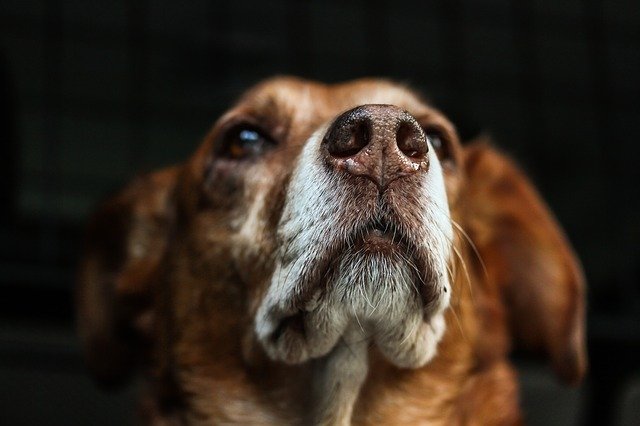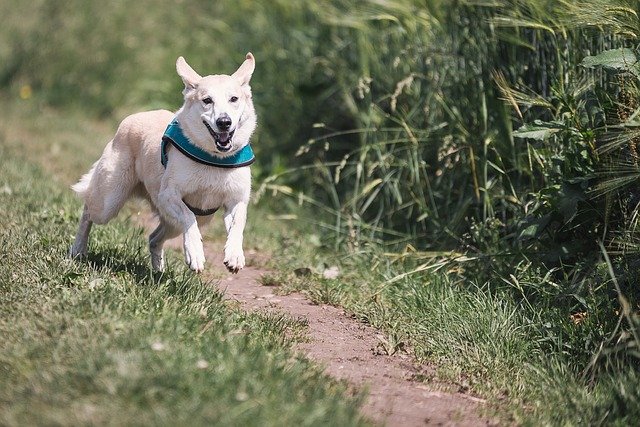Dogs indeed are more likely to get allergies and infections that lead to skin diseases. Blastomycosis disease in dogs is one of the common conditions that dogs may experience. Dogs’ owners need to watch symptoms of Blastomycosis in dogs to prevent the development of the disease and its complications and protect their dogs as soon as possible.
In this article, we will talk in detail about this disease and list the different Symptoms of Blastomycosis in dogs.
Table of Contents
What Is Blastomycosis Disease?
Blastomycosis disease in dogs commonly referred to as “Blasto,” is a comprehensive disease that can occur in dogs caused by dimorphic fungus Blastomyces dermatitidis, which can be found in the soil of specific areas.
This dangerous organism grows on high organic matter in the soil, a rich broth of decomposing wood, animal secretions, and moisture, which promotes its growth. The organism is present in the soil, and the inhalation of the fungi causes the infection.
Once the infection is formed in the lung, the fungus changes its properties by converting it from a muscular to a yeast shape and begins to spread to other organs, causing widespread infection. Mostly Blastomyces dermatitidis is found in the North, the Middle Atlantic states, southern Saskatchewan, Quebec…, etc.
In general, different studies estimate that dogs that live within 400 meters of water are more exposed to develop Blastomycosis because moist areas are a perfect host for Blastomyces dermatitidis.

Unfortunately, dogs that spend a lot of time outdoors and live in the mentioned areas are at a higher risk of inhaling this organism and thus develop this illness. (Especially those who like to sniff a lot and dig in the soil constantly).
So if you live in such areas and are a dog owner, you have to be aware of the symptoms of Blastomycosis in dogs.
“Possibly, before taking my dog out on a walk, I can get rid of this disease!” This idea of trying to get rid of the fungal organisms may occur to you. Sadly, there is nothing you can do about removing these dangerous organisms from these areas; all you can do is to pay attention to your dog to try and prevent it.
Luckily this condition is not contagious; as Dr. Legendre affirms, Blastomycosis disease does not spread from dogs to humans or from dogs to another.
However, when a dog and its owner develop this illness, they probably have inhaled the organism individually. So, if your dog is infected, that doesn’t necessarily mean that you will be infected either. Yet, one should always follow a strict hygiene routine (you know, just in case).
Actually, if your dog is infected, you should really be careful about the environment. In this case, Blastomyces dermatitidis are spreading around your house. It can be dangerous, especially if you do have: kids, older people, or anyone with a weak immune system.
Nevertheless, it is essential to note that dogs are more prone to get Blastomycosis than other species, including us (humans). Expert reports that we are about ten times less likely to get the illness than dogs.
Dr. Legendre adds that some statistics have shown that females are somehow less likely to develop Blastomycosis disorder than males. Although this can’t be stated as a general fact, he also says that most dogs between 2- to 4-year-old are at higher risk than others.
Knowing the answer to the question of what is Blastomycosis in dogs is essential and after going a piece of thorough information about this disease, let’s begin with the symptoms of Blastomycosis in dogs, as they are critical for every dog owner to know to prevent this disease and fix it quickly.

Symptoms Of Blastomycosis In Dogs
Knowing the symptoms of Blastomycosis in dogs is highly crucial because it can save your dog’s life if you manage to notice them early. If you discover this disease in its advanced stages, your dogs may get seriously ill. Your dog’s kidneys, eyes, brain, and bones may become infected, which can lead to a severe complication, and your dog may not survive.
The thing is with this illness is the fact that its symptoms may take a longer time than you think to develop fully. Also, if you do live in an area where there is not a lot of “blasto,” even your veterinarian may misdiagnose your dog’s case with it, simply because the symptoms of Blastomycosis in dogs are similar to other diseases.
- The most common symptoms of Blastomycosis in dogs are:
Lungs Symptoms
The first thing most dogs infected with Blastomycosis disease may display lung pathology. After all, it is the first area in the body where the fungus develops. This pathology is presented through fatigue and low energy and stamina in dogs’ activities. The owner may notice dry coughing as well. If you see and notice that your dog has these lung symptoms, you should definitely visit your veterinarian to do a thoracic radiographic examination.
Eyes Symptoms
Symptoms displayed in eyes are only apparent in less than 50% of the dogs infected. In this case, endophthalmitis is the most common sign. Other ocular manifestations may contain corneal edema, chorioretinitis, optic neuritis, serous, or granulomatous retinal detachment. To maintain vision, rapid diagnosis, and robust treatment are required. Also, once you notice your dog shows any signs of blindness, seek veterinary care immediately.

Lymph Nodes Symptoms
30% to 50% of dogs will have one or more enlarged peripheral lymph nodes. And that is because Blastomyces organisms also infect these lymph nodes.
Skin Symptoms
Developing skin lesions are seen in 30% to 50% in the infected dogs. Skin issues like group lesions such as ulcerated skin lesions that drain the purulent fluid are very common. This type of infection affects the bottom of the nose, leg, and nails, meaning the skin that is already in contact with the moist soil. If you notice these signs in your dog, it is highly recommended that you would get him a thorough examination of the skin.
Bone Symptoms
In every ten dogs infected with Blastomycosis, only three dogs will display lameness “Lameness is an abnormal gait or stance of an animal that is the result of dysfunction of the locomotor system.” The latter is a result of Bone infections. The effect on the extremities of the distal limb bones, cytology, or biopsy is usually the only way to distinguish between fungi and tumors. Symptoms, in this case, will be swelling of the soft tissues.
Other Symptoms
Other areas like the prostate, kidneys, joints, nasal passages, and brain tissues are less commonly to be infected by the Blastomyces dermatitidis.
Moreover, it is noteworthy to mention that dogs display high temperature in most cases. Besides, if you are used to seeing your dog active and cheerful all the time, you may remark that he is depressed suddenly. Also, weight loss and loss of appetite are common signs of Blastomycosis disease.

Treatment Of Blastomycosis In Dogs
As mentioned earlier, the sooner we notice symptoms of Blastomycosis in dogs, the higher chance of saving our pets from this deadly disease. Despite the small chances, your dog may survive. Lucky for you, we live in an era where medications are developed and improved rapidly day by day.
As the case for Blastomycosis disease, anti-fungal agents are more effective than before, and more importantly, they have fewer side effects than the old medications. Mostly, veterinarians tend to use fluconazole and itraconazole, for their tolerance among dogs. However, in some cases, some veterinarians use Amphotericin B or ketoconazole.
Your veterinarian will begin by checking the signs from your dogs, such as a systemic inflammatory response or the area of infection, to help diagnose the infection. Once it is suspected, several diagnostic tests are performed to reach a final diagnosis.
Blood and serum tests are done, and any abnormalities that are usually non-specific, but they do reflect chronic inflammation. Chest radiography is also a standard for diagnosing the Blastomycosis disease, and it reveals lung lesions too.
Clear identification of the organism through cellular or histological examination of the affected tissues is a typical diagnostic procedure that includes eye and skin lesions. It often helps speed up the diagnosis. The new urine and serum antigen test, which is called an enzyme immunoassay, or EIA may help veterinarians to diagnose the infection more quickly.
Owners of the infected dogs must keep in mind that the treatment will take several months (four months minimum). Besides, keep in mind that after the treatment is over and your dog is recovered totally, you have to take your pet for routine checkups (periodic evaluations.)
Notice that 20% of the dogs experience a relapse within six months after the therapy. For that reason, it is mandatory to keep an eye on your dog and visit your veterinarian during your dog’s routine checkups without any delays.

Conclusion
As mentioned earlier, there are many symptoms of Blastomycosis in dogs, which makes it difficult for you and your veterinarian to diagnose this disease effectively. However, as a dog owner, you know your dog better than anyone else. Therefore, you can notice any new changes in your dog quickly.
Your dog is your best friend. You must always search for different ways to improve your dog’s overall health and keep it happy. Sometimes it can be challenging, but doing the best you can do to make sure they stay healthy is your duty as a dog owner and your dog’s best friend.
You may buy many products, toys, healthy food, or even natural remedies to make sure your dog is happy and healthy. However, your dog still needs your attention and love. So, make sure to pay close attention to these symptoms to diagnose this disease as quickly as possible to prevent any further damage and complications.
So finally, I hope you found this article about Blastomycosis in dogs useful and informative. Let me know your answer down below. What do you think about this disease? Do you have more information or tips about Canine Blastomycosis or how to prevent its complications? Write them down below.
Also, if you have any other questions or different opinions about it, leave a comment below.
Today’s Quote:
“I wonder if other dogs think poodles are members of a weird religious cult!” — Rita Rudner
You’ll Also Love These Posts:
Studies have shown if you like this blog article — you will also love the following posts.


Our English Setter dog was recently diagnosed with Blasto. She is currently receiving treatment but she almost no appetite. Even cooked hamburger wasn’t appealing to her. Any suggestions for improving her appetite? Our kids’ labs both got Blasto and they almost ate them out of house and home.
I’m sorry to hear about your dog’s diagnosis. Blasto, or Blastomycosis, can indeed impact a dog’s appetite significantly. Here are some strategies to help improve her appetite:
1. **Warm Up the Food**: Warm food can be more aromatic and appealing. You can microwave her food for a few seconds to enhance its smell.
2. **Add Flavor Enhancers**: Consider adding low-sodium chicken or beef broth to her food. The added moisture and flavor might make her food more enticing.
3. **High-Value Treats**: Try offering high-value, smelly treats like small pieces of cooked chicken, turkey, or fish. These can sometimes be more tempting than regular dog food.
4. **Hand-Feeding**: Sometimes, dogs who feel unwell are more likely to eat if hand-fed. Sit with her and offer food from your hand to encourage her to eat.
5. **Frequent, Small Meals**: Instead of one or two large meals, offer smaller, more frequent meals throughout the day. This can be less overwhelming and more appealing.
6. **Change the Food Texture**: If she’s eating dry kibble, add water to make it soft or mix in some wet food.
7. **Prescription Appetite Stimulants**: Consult with your vet about medications that can stimulate her appetite. There are several options available that might help.
8. **Nutritional Supplements**: High-calorie nutritional supplements (like Nutri-Cal) can provide necessary calories and nutrients in a more palatable form.
9. **Low-Fat, Bland Diets**: Sometimes a bland diet, such as boiled chicken and rice, can be more appealing and easier on her stomach.
10. **Check for Secondary Issues**: Ensure there are no secondary issues like nausea or pain that could suppress her appetite. Your vet can prescribe medications to address these symptoms.
Each dog is different, so it might take some trial and error to find what works best for her. Be sure to inform your vet of her progress and any concerns you have during her treatment.
Wow! I have never heard of blasto before. I use the short name because I am having a hard time remembering the full name 😉
I know some other dog skin diseases that are caused by a fungus, but not this one, and blasto seems even worse because it can be fatal … It affects even the lungs and other parts of the body, so that is a little scary, especially if there are such different symptoms and it may be hard to know at first what’s wrong with your dog …
You mention that this is more frequent in humid areas. I live in the semi-desert, but at 4 kilometers distance from the ocean, so there is still humidity. Are such areas also prone to blasto? I will ask my veterinarian about this and see what he tells me, I would like to know if he has had any cases here.
Thank you very much for sharing!
We had a 4 year old dachshund that developed infection in her lungs. We treated her with an anti fungal. She lost weight, started walking near the walls and I think she had gone deaf? Vets never made a true diagnosis. I woke up one Sunday morning to her having seizures. Our vet didn’t have a current emergency number to call!
I finally found one in another city and took her.
She was so bad, they recommended sending her to Nashville for treatment. We couldn’t afford to do this. We decided to have her put to sleep. It was the hardest thing I’ve ever done. Her seizures had gotten so bad, the meds didn’t work.
I’ll always believe she had Blasto.